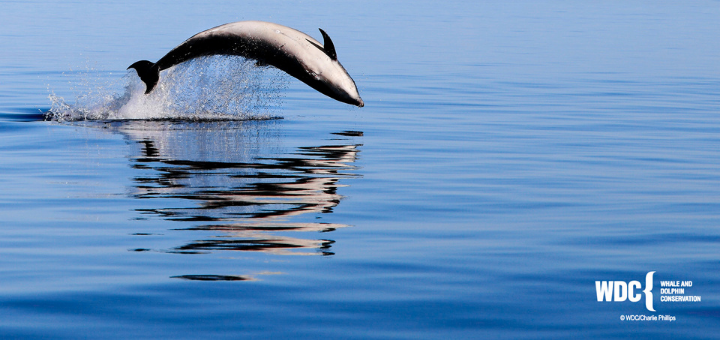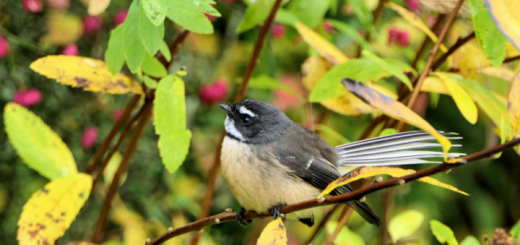
National Dolphin Day. A Q&A with WDC’s Charlie Phillips
Charlie Phillips here, I’m the adopt a dolphin field officer for Whale and Dolphin Conservation and I think that I have one of the best jobs in the world on the north east coast of Scotland near Inverness. It’s a really lovely place and so is my ‘office’, a peninsula called Chanonry Point where, for over 20 years, I have been watching, studying, photographing and filming the wonderful population of resident bottlenose dolphins.
Wednesday 14th April is National Dolphin Day, and our friends at Ethical Superstore, who have been supporting WDC since 2016, are joining us in celebrating these magnificent creatures: dolphins! Last week you sent in some brilliant questions about dolphins and it was great to see how interested and curious people are about them. You can check out my answers below and hopefully you will learn something new about dolphins and the work WDC does to protect them.
Can you tell us more about National Dolphin Day?
Each year on 14th April, National Dolphin Day celebrates the intelligent, social and charismatic souls that are known to us as dolphins. There can be awareness activities and watching events (Covid restrictions allowing) taking place up and down the country and online webinars where you can learn about them. Many conservation groups have something happening, and I am hosting a Q&A on Zoom on 14th April at 16:00 (follow @whalesorg on social media to find out how to join!)
Who are Whale and Dolphin Conservation?
WDC, Whale and Dolphin Conservation, is the leading, global charity dedicated to the protection of whales and dolphins. We are a group of passionate scientists, conservationists and activists that have, for over 30 years, been working around the world to make the world a better place for all whales, dolphins and porpoises by ending captivity, stopping whaling, preventing death in nets and creating healthy seas. Our vision is a world where every whale and dolphin is safe and free.
How does the intelligence of dolphins compare to other mammals?
Very highly indeed, dolphins have extremely large, complex brains, and some species possess brain cells known as spindle neurons, believed to be associated with empathy and emotional intelligence. People used to think that these cells were only found in the brains of humans and some other primates. Trying to understand just how intelligent they are is difficult as their world is so different to ours but from observations of tool use, co-ordinating very complicated behaviour to hunt together, having cultures and traditions and actively playing and inventing games are just some of the things that have been put forward as evidence for the high level of intelligence of dolphins.

When dolphins swim with other dolphins or whales together, can they communicate with each other?
It’s possible that different species may be able to understand each other through body language, as we know this to be extremely important in whale and dolphin societies. However, as far as we know, vocalisations are highly specific to a species and even to individual cultures. So we could anticipate that the vocalisations of another species might be difficult to interpret, since whales and dolphins learn the meaning of different vocalisations from birth and even the hearing range differs between species. So understanding each other’s vocalisation might be at least as difficult as us learning what the vocalisations of other apes mean – something we have yet to unravel.
How long do dolphins live?
Some of the smaller dolphin species might only live for 15 to 20 years but the mighty orca (the largest of the dolphin species) can live to around 80 years of age. We think that the bottlenose dolphins that I study could have a maximum lifespan of maybe 60 years. Females tend to outlive males, much like humans.
Can you tell us something people may not know about dolphins?
The age of dolphins can normally only be found out by slicing a tooth in half lengthways and looking at the layer groups under a microscope – just like tree rings, the total layers that are counted indicate how old the dolphins is.
How many different species of dolphins are there?
There are around 42 species of dolphins known at the moment, but new discoveries are being made all the time and exact numbers can change quickly, plus classification of species and sub-species is tricky and can take ages for everyone to agree.
How are dolphins endangered?
Dolphins face many dangers. Their biggest threat is entanglement in fishing gear (or ‘bycatch’) which kills hundreds of thousands of dolphins, porpoises and whales every year – more than 1,000 of these annual deaths are in UK seas. Dolphins also face hunting, habitat loss due to human development and resource exploitation such as exploration for oil and gas, noise from shipping, military exercises and construction, food depletion through our overfishing, and capture for the captivity industry. Climate change and pollution are also major threats their survival. Some critically endangered species have so few individuals left that they are facing extinction.

What can we do to help protect dolphins?
Supporting WDC would be a great start as the more supporters we have, the more effective our voice can be in the fight for a better world for all whales and dolphins.
When shopping with Ethical Superstore, you can choose to donate to WDC at the checkout. You can adopt a whale or dolphin with WDC as well! All funds raised go towards our campaigns and education projects globally, as well as to vital research and conservation work here in the UK to protect around 28 whale and dolphin species who call UK waters their home, including bottlenose, common and Risso’s dolphins, humpback whales, orcas and harbour porpoises.
Images: WDC/Charlie Phillips
View our range of plastic free products here
Read more about World Oceans Day 2021



